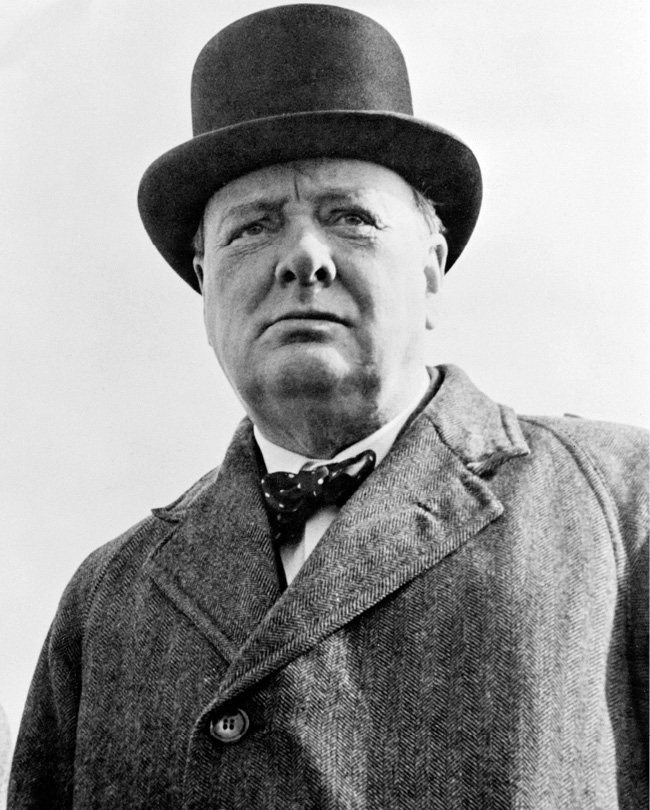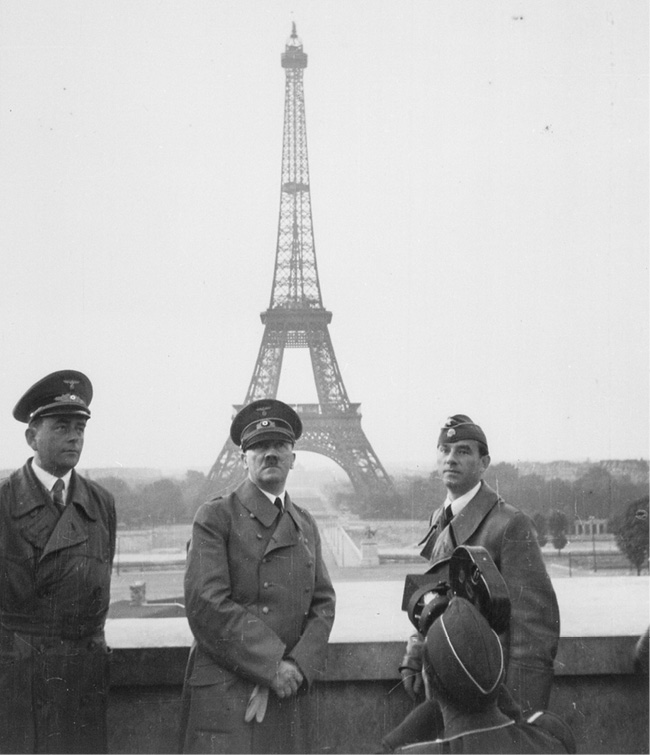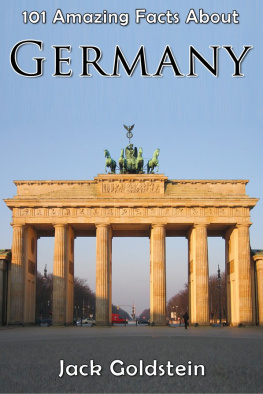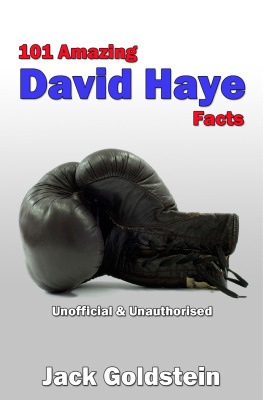Title Page
101 AMAZING FACTS ABOUT THE SECOND WORLD WAR
Jack Goldstein
Publisher Information
Published in 2014 by
Andrews UK Limited
www.andrewsuk.com
The right of Jack Goldstein to be identified as the author of this work has been asserted by him in accordance with the Copyright, Designs and Patents Act 1998
Copyright 2014 Jack Goldstein
All rights reserved. No part of this publication may be reproduced, stored in a retrieval system, or transmitted, in any form or by any means without the prior written permission of the publisher, nor be otherwise circulated in any form of binding or cover other than that in which it is published and without a similar condition being imposed on the subsequent purchaser. Any person who does so may be liable to criminal prosecution and civil claims for damages.
All facts contained within this book have been researched from reputable sources. If any information is found to be false, please contact the publishers, who will be happy to make corrections for future editions.
Introduction
What was the origin of the word Nazi? Who were the key figures involved in the Second World War, and what terrible weapons did they unleash? All these questions and more are answered in this fascinating book containing over one hundred facts about WWII. Whether you are looking for information to include in a project or article, or you are just interested in finding out more about this tragic period in modern history, this is a perfect addition to any bookshelf.
Follow Jack Goldstein on Twitter @GoldsteinBooks
Visit Goldstein Books at www.jackgoldsteinbooks.com
Key Information
- The Second World War started after Germany attacked Poland. Britain and France demanded the Germans withdraw from the territory they had occupied, but when they did not, on the 3 rd of September 1939 Britains Prime Minister Neville Chamberlain declared war.
- Adolf Hitler, the leader of Germany (there known as the Fhrer ) wanted to take over other countries in Europe either by partnership or force.
- Hitler was the head of the National Socialist German Workers Party, which is most often referred to as the Nazi Party. He rose to power when people in Germany suffered terrible financial penalties as a result of the Treaty of Versailles, signed at the end of the First World War, which Germany had lost. The public increasingly looked up to a man who spoke of national pride, and who brought their country out of economic depression.
- The Nazis held extreme racist beliefs, in particular that they were a master race of people, pure Aryans (a word used to describe white people of European heritage). Much of their hate was targeted against Jewish people, initially taking their possessions and imprisoning them then later killing them in terrible numbers. This mass genocide is known as the Holocaust.
- It is thought that up to seventy million people from all sides were killed in the conflict. Although more people are thought to have died in Chinas Taiping Rebellion between 1851 and 1864, the Second World War is said to be the most destructive conflict in history, costing more money, damaging more property and causing more changes to way of life than any other.
- Throughout the course of the war, practically every single one of the worlds nations joined the conflict, forming two sides - the Axis powers (Germany, Japan and Italy and the territories they occupied) and the Allies (the United Kingdom of Great Britain and Northern Ireland, the Soviet Union, The USA, China, France and many other countries in Europe and across the world who were united in their opposition to the Nazi partys values and actions).
- Once Hitlers Germany (along with Benito Mussolinis Italy) had aggressively taken over much of Europe, the key battlefronts were the skies over Britain, the seas of the Atlantic, the waters and land territories of the Pacific Ocean, the land and air of North and East Africa, and a large part of the Soviet Union, which Germany decided to invade.
- Initially, Germany had signed a treaty with Russia (called the Molotov-Ribbentrop Pact) which meant they worked together to conquer then divide up much of Europe, including Poland, Finland and the Baltic states. However, Hitlers lust for superiority and rule over other nations caused him to renege on this deal.
- Most historians agree that it was Hitlers decision for his country to fight on this additional Eastern front (along with his delay in attempting to take over Britain) that lost him the war.
- The war in Europe ended on the 8 th of May 1945 (which we now call V-E Day , for Victory in Europe) when the allies successfully invaded Germany, capturing Berlin and accepting Germanys unconditional surrender. Japan surrendered on the 15 th of August that same year after the Americans dropped atomic bombs on two of their cities; this date is known as V-J Day in the United Kingdom (Victory over Japan) although it is celebrated on the 2 nd of September in the US, as that was the date the surrender was officially signed.

Sir Winston Leonard Spencer-Churchill
Key Figures in the War
- Adolf Hitler (1889-1945) - leader of the Nazi Party who led his country into the most damaging conflict the world has ever seen. Committed suicide in his bunker in Berlin.
- Winston Churchill (1874-1965) - Prime minister of the United Kingdom for most of the war, he was voted as the greatest Briton of all time in 2002.
- Josef Stalin (1878-1953) - leader of the Soviet Union, successfully defending his country against German invasion and overseeing its growth into a world superpower in the early post-war years.
- Benito Mussolini (1883-1945) - dictator of Italy known as Il Duce (meaning the leader) who was voted out in 1943 after the Allies invaded his country. He was imprisoned by the Italian King, but later rescued by the Germans. Realising in 1945 that the Axis would soon lose the war, he attempted to flee north, but was caught and executed by Italian Partisans.
- Franklin D Roosevelt (1882-1945) - president of the United States of America when they joined the war two years after the fighting began (he originally wanted the country to remain officially neutral in the conflict).
- General Hideki Tojo (1884-1948) - Prime Minister of Japan for most of the war; Tojo was directly responsible for his countrys infamous attack on Pearl Harbour. He was hanged on the 23 rd of December 1948 for crimes against humanity.
- Harry Truman (1884-1972) - American president who took over after the death in office of FDR. Truman authorised the use of nuclear weapons against Japan, effectively signing the death warrant of around 250,000 civilians; some argue this prevented more deaths in the long term whereas others say it was unnecessary.
- Hermann Gring (1893-1946) - senior figure in the Nazi Party and head of the German Luftwaffe (airforce). He was arrested at the end of the war and sentenced to death for his crimes, but killed himself by taking cyanide the night before his planned execution.
- Heinrich Himmler (1900-1945) - head of the SS who was obsessed with racial purity, overseeing the mass genocide of millions of non-Aryans. He committed suicide after being captured by the Allies in 1945.
- Joseph Goebbels (1897-1945) - key figure of the Nazi propaganda machine who showed no morals in convincing the countrys people to believe in his partys aim of world domination. When he realised defeat was imminent, he, along with his wife, killed his six children before committing suicide - her by poison and him with a gun.

Next page







